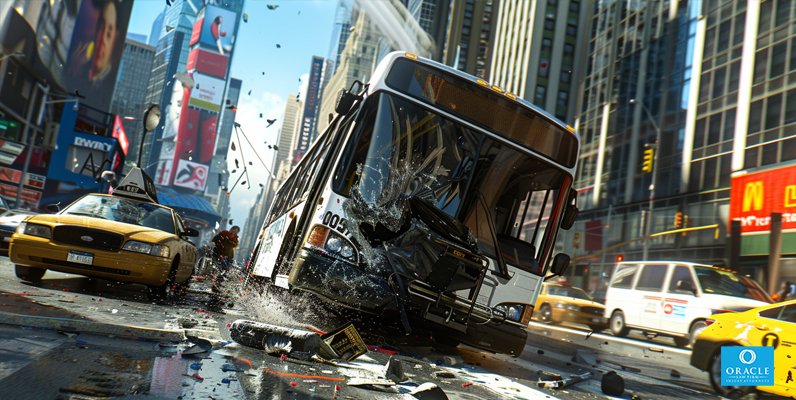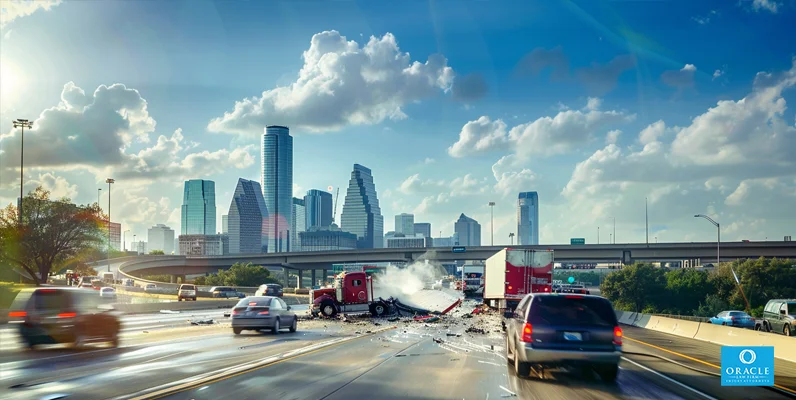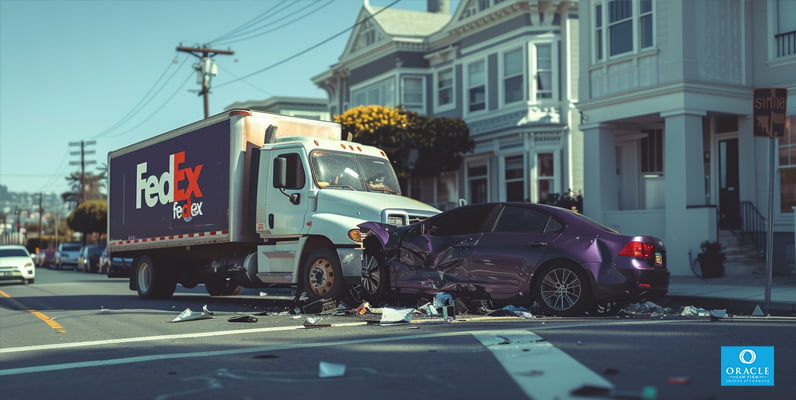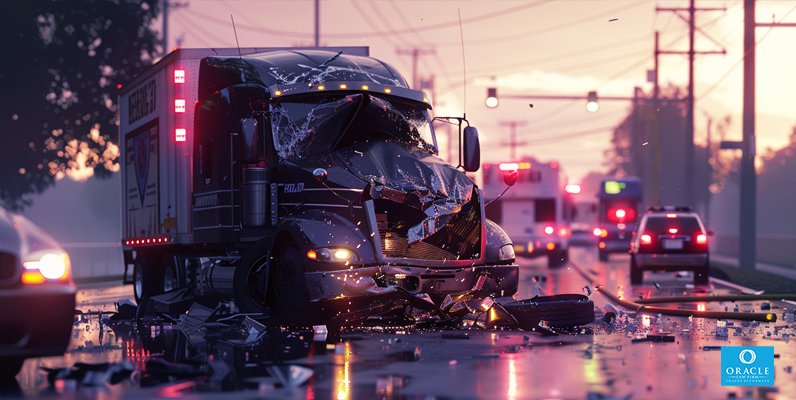Being involved in a t-bone car accident can be a traumatic experience. These accidents, also known as side-impact or broadside collisions, occur when one vehicle strikes the side of another at an intersection or angle. The severity of t-bone accidents can range from minor vehicle damage to catastrophic injuries or even death. The aftermath of such an accident often involves disputes over who was at fault, leading to complex legal battles. This article explains t-bone accidents, how fault is determined, and how to seek damages.
Determining who is at fault in a t-bone accident can be complex. It involves investigating the specific circumstances of the accident, including the two other drivers’ actions, traffic signals, right-of-way rules, and any potential traffic violations. This process is crucial as it directly impacts the victims’ ability to seek compensation for their damages, including medical bills, lost wages, and other related expenses.
Reliable legal guidance can be invaluable in the aftermath of a t-bone accident. An experienced car accident attorney can assist with conducting a thorough investigation, establishing liability, and maximizing compensation through insurance settlements or personal injury lawsuits. Their expertise can make the difference in determining fault and obtaining the necessary damages to cover the victims’ losses.
Overview of T-Bone Car Accidents: Definition, Statistics, How They Happen
A t-bone crash, also known as a side-impact or a side impact collision or broadside collision, occurs when the front of one vehicle strikes the side of another, forming a “T” shape. This type of accident is most common at intersections, where vehicles move in different directions, and one fails to yield the right of way.
According to the Insurance Institute for Highway Safety (IIHS), t-bone accidents account for approximately 25% of passenger vehicle occupant deaths. The severity of these when t bone accidents occur is often due to the lack of protection on the sides of vehicles. Unlike the front and rear of a vehicle, which have crumple zones to absorb the impact of a crash, the sides of a vehicle offer less protection, leaving occupants vulnerable to severe injuries.
Most t-bone accidents happen due to a driver’s negligence. This could be due to distracted driving, speeding, failing to yield the right of way, or running a red light or stop sign. Sometimes, a driver may lose control of their vehicle due to adverse weather conditions or a mechanical failure, leading to a t-bone collision.
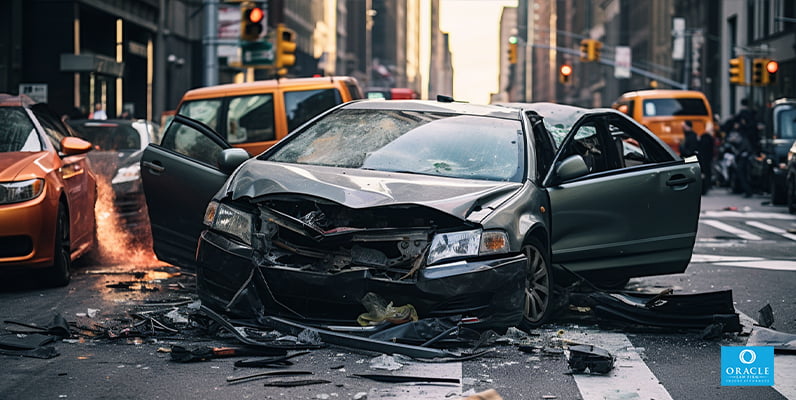
The Role of Determining Fault in These Accidents
For several reasons, determining who is at fault in a t-bone accident is crucial. First, it helps to establish who is financially responsible for the damages resulting from the t-bone accident. This includes medical bills, property damage, lost wages, and other related expenses.
Second, determining fault can impact a person’s driving record and insurance premiums. The at-fault driver may see an increase in their insurance rates, and they could also face penalties such as fines or points on their driving record, depending on the laws in their state.
Finally, establishing fault is essential for any potential legal action. If a victim files a personal injury lawsuit against the at-fault driver, they must prove that the other driver’s negligence caused the accident.
Determining fault in a t-bone accident involves a thorough investigation of the accident. This includes examining the accident scene, reviewing the official police report, interviewing witnesses, and sometimes consulting with accident reconstruction experts. An experienced car accident attorney can guide victims through this process, helping them gather the necessary evidence to prove fault and seek the compensation they deserve.
Who is at Fault for a T-Bone Accident
In most t-bone accident cases, the driver of one car who struck the other vehicle is typically considered at fault. However, this is not always the case. Determining who is at fault in a t-bone accident depends on several factors, including the drivers’ actions leading up to the accident, the rules of the road, and any potential traffic violations.
For example, if one driver ran a red light or failed to yield the right of way at a stop sign, they would likely be considered at fault for the accident. On the other hand, if the driver of the hit vehicle was making an illegal left turn or was driving on the wrong side of the road, they could be found at fault.
In some cases of vehicle crashes, both drivers may share responsibility for the accident. This is known as comparative negligence. For instance, if one driver was speeding while the other ran a red light, both drivers could be found partially at fault. The degree of each driver’s fault will determine the compensation they may receive or owe.
How Fault is Determined Based on Negligence
Negligence is key in determining who is at fault in a t-bone accident. In legal terms, negligence refers to a failure to behave with the level of care that someone of ordinary prudence would have exercised under the same circumstances.
To prove negligence in a car accident case, four elements must be established:
- Duty: The driver had a duty to drive safely and follow traffic laws.
- Breach: The driver breached that duty by acting or failing to act a certain way.
- Causation: The driver’s actions or inaction caused the accident.
- Damages: The victim suffered damages as a result of the accident.
For example, if a driver ran a red light (breach of duty) and hit another vehicle (causation), causing injuries and vehicle damage (damages), they would likely be found negligent and therefore at fault for the accident.
However, proving negligence can be complex, especially in car accident cases where multiple factors contributed to the accident. An experienced car accident attorney can help victims gather the necessary evidence and build a strong case to prove the other driver’s negligence.
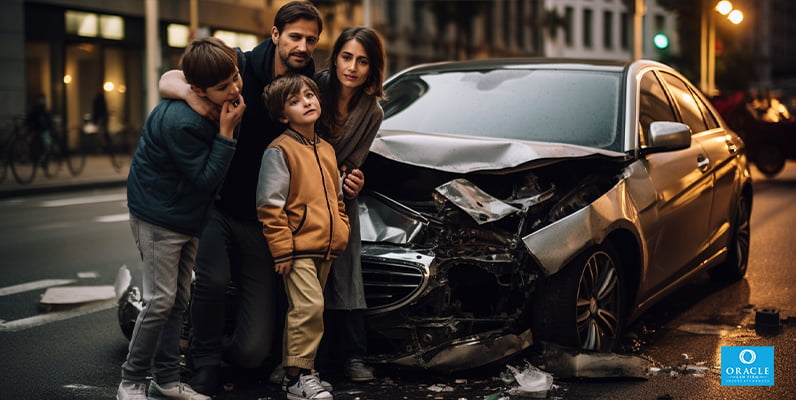
Factors That Are Considered: Traffic Signals, Right of Way, Violations
When determining fault in a t-bone accident, several factors are considered. These include the state of traffic signals during the accident, the right-of-way rules, and any traffic violations committed by the drivers involved.
Traffic Signals: The state of traffic lights or signs during the accident can be crucial in determining fault. For instance, if one driver ran a red or green light or ignored a stop sign, they would likely be found at fault. Traffic cameras can provide valuable evidence in such cases.
Right of Way: Right-of-way rules dictate which vehicle can proceed first in different traffic situations. For example, the first vehicle has the right of way at a four-way stop. If two vehicles arrive at a traffic light simultaneously, the vehicle on the right has the right of way. If a driver fails to yield the right of way and causes a t-bone accident, they would typically be found at fault.
Traffic Violations: Any traffic violations committed by the drivers involved can also impact the determination of fault. This could include speeding, reckless driving, distracted driving, or driving under the influence of alcohol or drugs. Evidence of such violations can strengthen a victim’s claim of the other driver’s negligence.
Evidence That Can Demonstrate Fault: Vehicle Damage, Witness Testimony
Proving fault in a t-bone accident often requires strong evidence. This can include:
Vehicle Damage: The location and extent of damage to the vehicles involved can explain how the accident occurred and who was at fault. For instance, if one car’s front end is damaged and the other car’s side is damaged, it may indicate that the first car struck the second, suggesting that the first driver may be at fault.
Witness Testimony: Witnesses to the accident can provide valuable insights into how the accident occurred. They may be able to confirm whether a driver ran a red light, failed to yield the right of way, or committed any other traffic violations.
Police Reports: The official police report can provide an objective account of the accident, including the officers’ observations and any citations issued. It may also include statements from the drivers and witnesses.
Photographs and Video Footage: Photos or videos of the accident scene, vehicle damage, and visible injuries can be powerful evidence. Traffic or surveillance cameras may also capture the accident, providing irrefutable evidence of what occurred.
Collecting and presenting this evidence effectively requires legal expertise. An experienced car accident attorney can help victims gather the necessary evidence and use it to build a strong case proving the other driver’s fault.
Seeking Damages After a T-Bone Car Accident
Once fault has been established in a t-bone accident, the injured party can seek damages from the at-fault driver or their insurance company. Damages refer to the monetary compensation awarded to victims to cover their losses from the accident. These can be divided into two main categories: economic and non-economic damages.
Economic Damages are tangible, out-of-pocket expenses that can be calculated and proven with bills or receipts. They include medical expenses, property damage, lost wages due to time off work, and future earnings loss if the victim cannot return to work or can only work in a limited capacity.
Non-Economic Damages: These are intangible losses with no specific monetary value. They include pain and suffering, emotional distress, loss of enjoyment of life, and loss of consortium, which refers to the impact of the victim’s injuries on their relationship with their spouse.
In some cases, punitive damages may also be awarded. These are not intended to compensate the victim but to punish the at-fault driver and deter similar behavior in the future. Punitive damages are typically awarded in cases where the at-fault driver’s actions were particularly reckless or malicious.
Role of Insurance Companies in Assessing Fault and Damages
Insurance companies play a significant role in t-bone accident cases. After an accident, the drivers’ insurance companies will conduct their own investigations to determine fault. This process involves reviewing the evidence, interviewing the drivers and witnesses, and sometimes consulting with accident reconstruction experts.
Once the fault has been determined, the at-fault driver’s insurance company is typically responsible for paying damages. The compensation offered by the insurance company will depend on the extent of the victim’s serious injuries sustained, the cost of medical treatment, the amount of property damage, and other related factors.
However, it’s important to remember that insurance companies are businesses whose goal is to minimize payouts. They may try to downplay the severity of the victim’s injuries, dispute the cost of medical treatment, or even deny the insurance claim altogether. This is why victims must have an experienced personal injury attorney on their side. An attorney can negotiate with the insurance company on the victim’s behalf, ensuring they receive the full compensation they deserve.

When to Hire a Personal Injury Lawyer for Help with Your Claim
Navigating the aftermath of a t-bone accident can be overwhelming, especially when dealing with injuries, medical bills, and insurance companies. Hiring a personal injury lawyer can provide invaluable assistance during this challenging time.
A personal injury lawyer can help in several ways. They can thoroughly investigate the accident, gather evidence, and build a strong case proving the other driver’s fault. They can also accurately calculate the full extent of car accident lawyer and your damages, including future medical costs and non-economic damages like pain and suffering.
Additionally, a personal injury lawyer can handle all communications and negotiations with the insurance company, ensuring your rights are protected. If the insurance company refuses to offer a fair settlement, your lawyer can take your case to court and fight for your deserved compensation.
Hiring a personal injury lawyer as soon as possible after a t-bone accident is generally recommended. This allows your lawyer to gather evidence while it’s fresh and take necessary steps to protect your claim.
Building Your Claim After a T-Bone Car Accident
Building a strong claim after a t-bone accident involves several steps:
Gathering Evidence: This includes collecting evidence from the accident scene, such as photographs of vehicle damage and road conditions, witness statements, and the official police report. Medical records documenting your injuries and treatment are also crucial.
Proving Fault: Using the gathered evidence, your lawyer will build a case proving the other driver’s negligence. This may involve demonstrating that the other car or driver violated traffic laws, failed to yield the right of way, or drove recklessly or carelessly.
Calculating Damages: Your lawyer will calculate the full extent of your economic and non-economic damages. This involves adding up your medical bills, estimating future medical costs, calculating lost wages, and determining a fair amount for your pain and suffering.
Negotiating with the Insurance Company: Your lawyer will submit a demand letter to the at-fault driver’s insurance company, outlining the case facts, the evidence of the other driver’s fault, and the amount of compensation you’re seeking. If the insurance company refuses to offer a fair settlement, your lawyer may recommend taking your case to court.
Throughout this process, an experienced personal injury lawyer can provide guidance and support, ensuring your claim is as strong as possible and increasing your chances of receiving the compensation you deserve.
Steps for Filing a Lawsuit if Insurance Settlement is Insufficient
If the at-fault driver’s insurance company refuses to offer a fair settlement or if the damages exceed the driver’s insurance policy limits, it may be necessary to file a personal injury lawsuit. Here are the steps involved in this process:
Filing a Complaint: The first step in filing a lawsuit is to draft and file a complaint with the court. This document outlines the facts of the case, the legal basis for the lawsuit, and the damages you’re seeking.
Serving the Defendant: After filing the complaint, the defendant (the at-fault driver) must be formally notified of the lawsuit. This is known as “serving” the defendant.
Discovery: Both sides exchange information and evidence about the case during discovery. This can include documents, photographs, medical records, and witness testimony.
Negotiation and Settlement: Even after a lawsuit is filed, settlement negotiations can continue. In many cases, a lawsuit can prompt the insurance company to offer a more reasonable settlement to avoid the cost and uncertainty of a trial.
Trial: If a settlement cannot be reached, the case will proceed to trial. Both sides will present their evidence, and a judge or jury will determine whether the defendant is liable for the accident and, if so, how much they owe in damages.
Filing a lawsuit can be a complex and time-consuming process. An experienced personal injury attorney can guide you through each step, ensuring your rights are protected and advocating for the compensation you deserve.
Key Takeaways
T-bone accidents often involve serious injuries and significant disputes over fault. Determining who is at fault in a t-bone accident involves a thorough investigation and careful analysis of the evidence. Traffic signals, right-of-way rules, and traffic violations are all crucial factors in this determination.
Once the fault has been established, the injured party can seek damages from the at-fault driver or their insurance company. These damages include medical expenses, lost wages, property damage, and non-economic damages like pain and suffering.
In many cases, an experienced personal injury attorney can provide invaluable assistance in establishing fault, calculating damages, and negotiating with the insurance company. If the insurance company refuses to offer a fair settlement, a personal injury attorney can help you file a lawsuit and fight for the compensation you deserve in court.
In conclusion, if you’ve been involved in a t-bone accident, it’s crucial to seek legal advice as soon as possible. An experienced car accident attorney can help you navigate the complex process of determining fault, seeking damages, and protecting your rights.
Frequently Asked Questions
What is a T-Bone accident?
A T-bone accident, also known as a side-impact or broadside collision, occurs when the front of one vehicle strikes the side of another, forming a “T” shape. These accidents are most common at intersections when one driver fails to yield the right of way to oncoming traffic.
Who is at fault in a T-Bone accident?
Determining fault in a T-Bone accident depends on several factors, including the drivers’ actions, traffic signals, and right-of-way rules. Typically, the driver who failed to yield the right of way or violated traffic laws is considered at fault.
What kind of damages can I claim after a T-Bone accident?
Victims of T-Bone accidents can claim both economic and non-economic damages. Economic damages include medical expenses, property damage, and lost wages. Non-economic damages cover intangible losses like pain and suffering, emotional distress, and loss of enjoyment of life.
How can a personal injury lawyer help after a T-Bone accident?
A personal injury lawyer can assist in several ways after a T-Bone accident. They can thoroughly investigate, gather evidence, prove the other driver’s fault, calculate damages, and negotiate with the insurance company. If necessary, they can also represent you in court.
When should I hire a personal injury lawyer after a T-Bone accident?
Hiring a personal injury lawyer as soon as possible after a T-Bone accident is generally recommended. This allows your lawyer to gather evidence while it’s fresh and take necessary steps to protect your claim.
What if the insurance company refuses to offer a fair settlement?
If the driver loses control, the insurance company refuses to offer a fair settlement, or damages exceed the driver’s insurance policy limits, you may need to file a personal injury lawsuit. An experienced personal injury attorney can guide you through this process.


